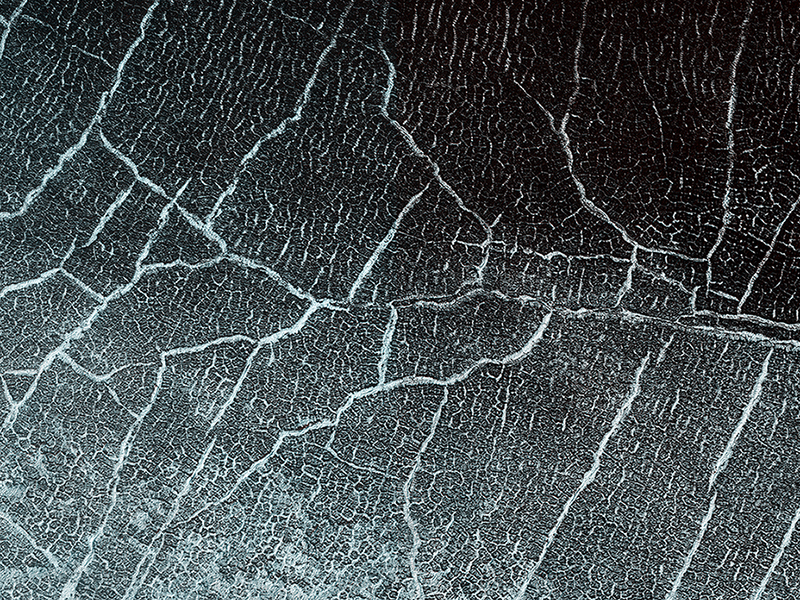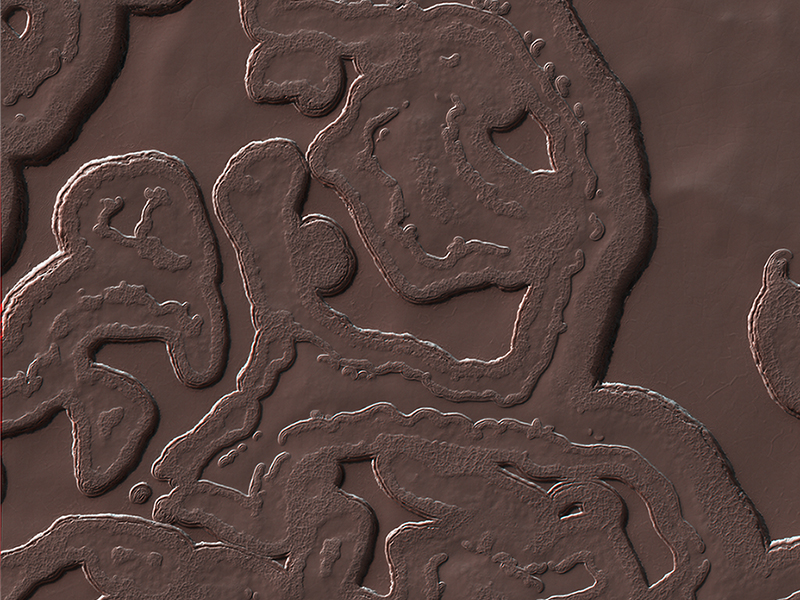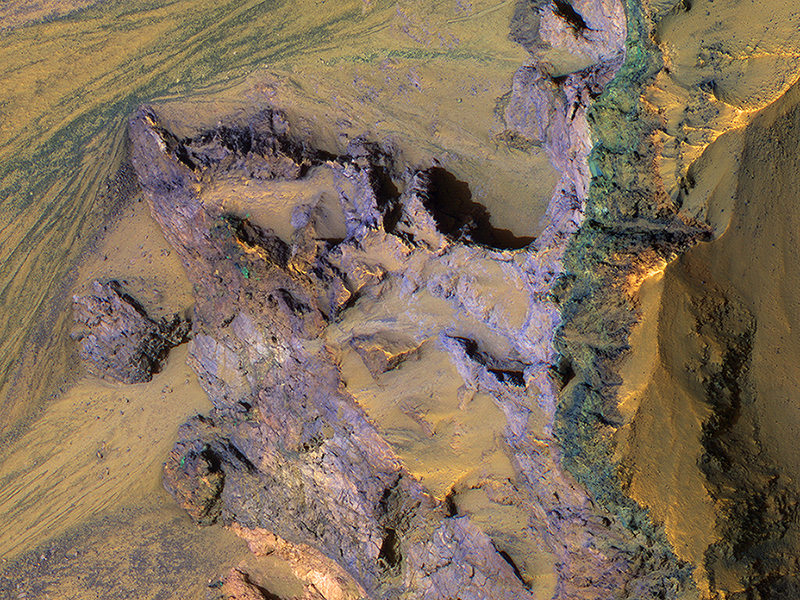Candy Hansen wrote:Painting with Frost (ESP_047074_1030) (HiClip)
Subtle variations in color look like brush strokes as the lightly frosted terrain reflects light. These variations provide a backdrop to some exotic features referred to colloquially as “spiders.”
The radial channels branching out from a central depression are formed when the seasonal layer of dry ice turns to gas in the spring and erodes the surface, which is a uniquely Martian landform.
This target was identified by the citizen scientists at Planetfour: Terrains.
Shane Byrne wrote:Cracks in a Crater's Ice (ESP_047247_1150) (HiClip)
Many impact craters on Mars were filled with ice in past climates. Sometimes this ice flows or slumps down the crater walls into the center and acquires concentric wrinkles as a result. This image shows an example of this.
There are other ways that scientists know the material in the crater is icy. Surface cracks that form polygonal shapes cover the material in the crater. They are easy to see in this spring-time image because seasonal frost hides inside the cracks, outlining them in bright white. These cracks form because ice within the ground expands and contracts a lot as it warms and cools.
Scientists can see similar cracks in icy areas of the Earth and other icy locations on Mars. If you look closely, you’ll see small polygons inside larger ones. The small polygons are younger and the cracks shallower while the large ones are outlined with cracks that penetrate more deeply.
Shane Byrne wrote:The Coolest Landscape on Mars (or Earth) (ESP_047304_0930) (HiClip)
Many Martian landscapes contain features that are familiar to ones we find on Earth, like river valleys, cliffs, glaciers and volcanos.
However, Mars has an exotic side too, with landscapes that are alien to Earthlings. This image shows one of these exotic locales at the South Pole. The polar cap is made from carbon dioxide (dry ice), which does not occur naturally on the Earth. The circular pits are holes in this dry ice layer that expand by a few meters each Martian year.
New dry ice is constantly being added to this landscape by freezing directly out of the carbon dioxide atmosphere or falling as snow. Freezing out the atmosphere like this limits how cold the surface can get to the frost point at -130 degrees Celsius (-200 F). Nowhere on Mars can ever get any colder this, making this this coolest landscape on Earth and Mars combined!
This is a stereo pair with ESP_047237_0930.
Alfred McEwen wrote:Colorful Bedrock Exposed in a Landslide Scarp (ESP_047502_1730) (HiClip)
The steep walls of Valles Marineris sometimes fail, creating giant landslides. This provides a clean exposure of the underlying bedrock.
This image of the north wall of Ganges Chasma reveals bedrock with diverse colors and textures, representing different geologic units.
Credit: NASA/JPL-Caltech/University of Arizona
<< Previous HiRISE Update



